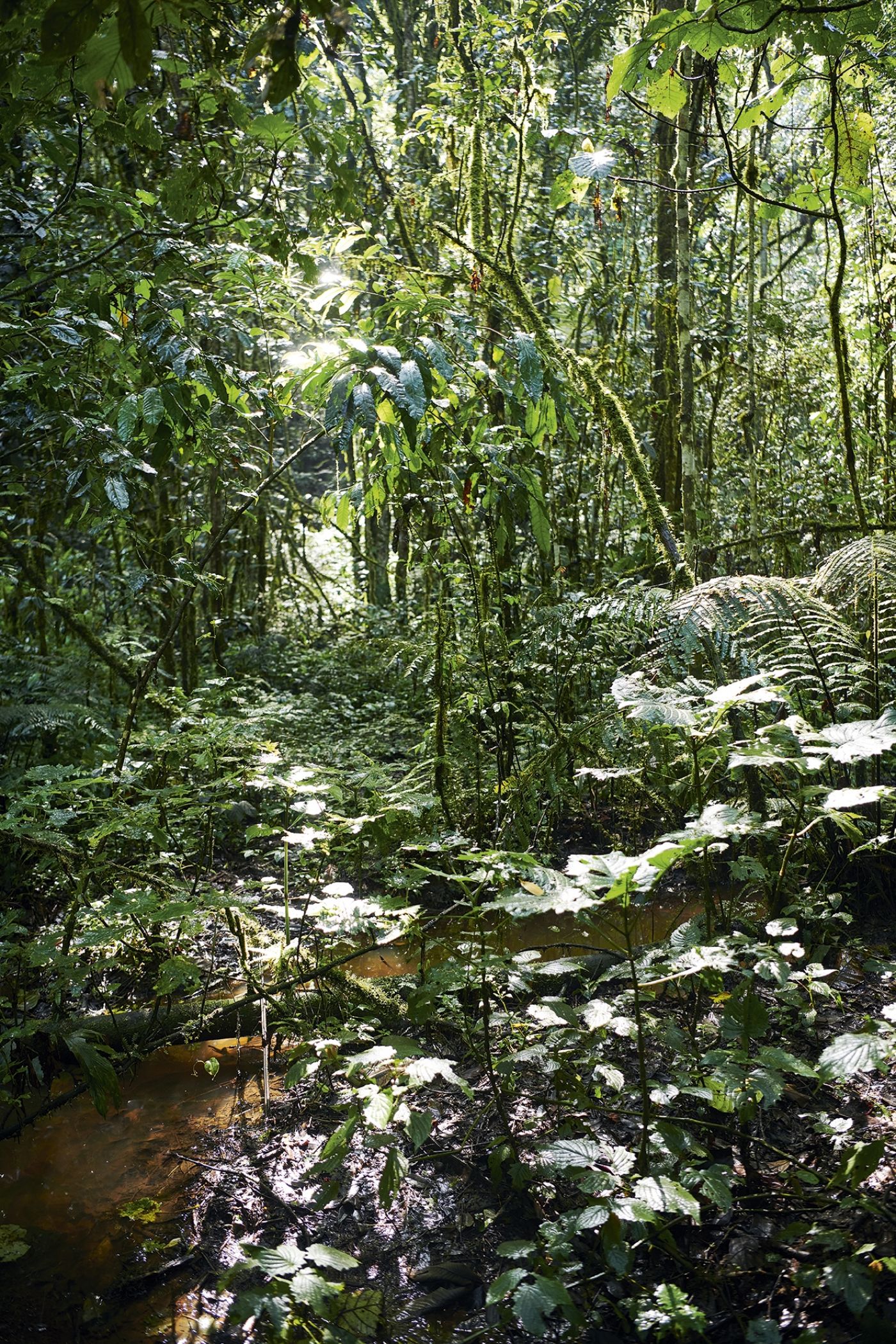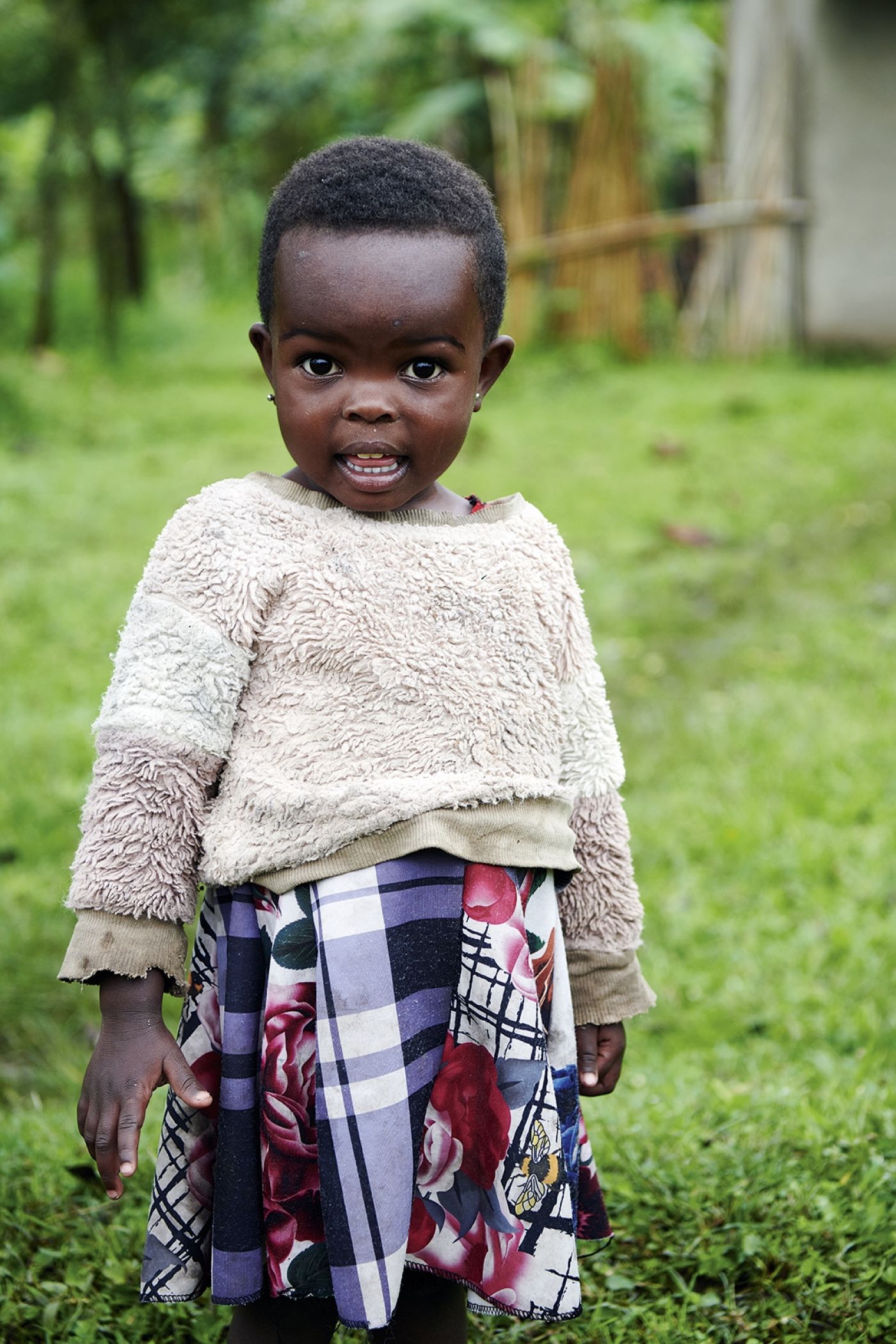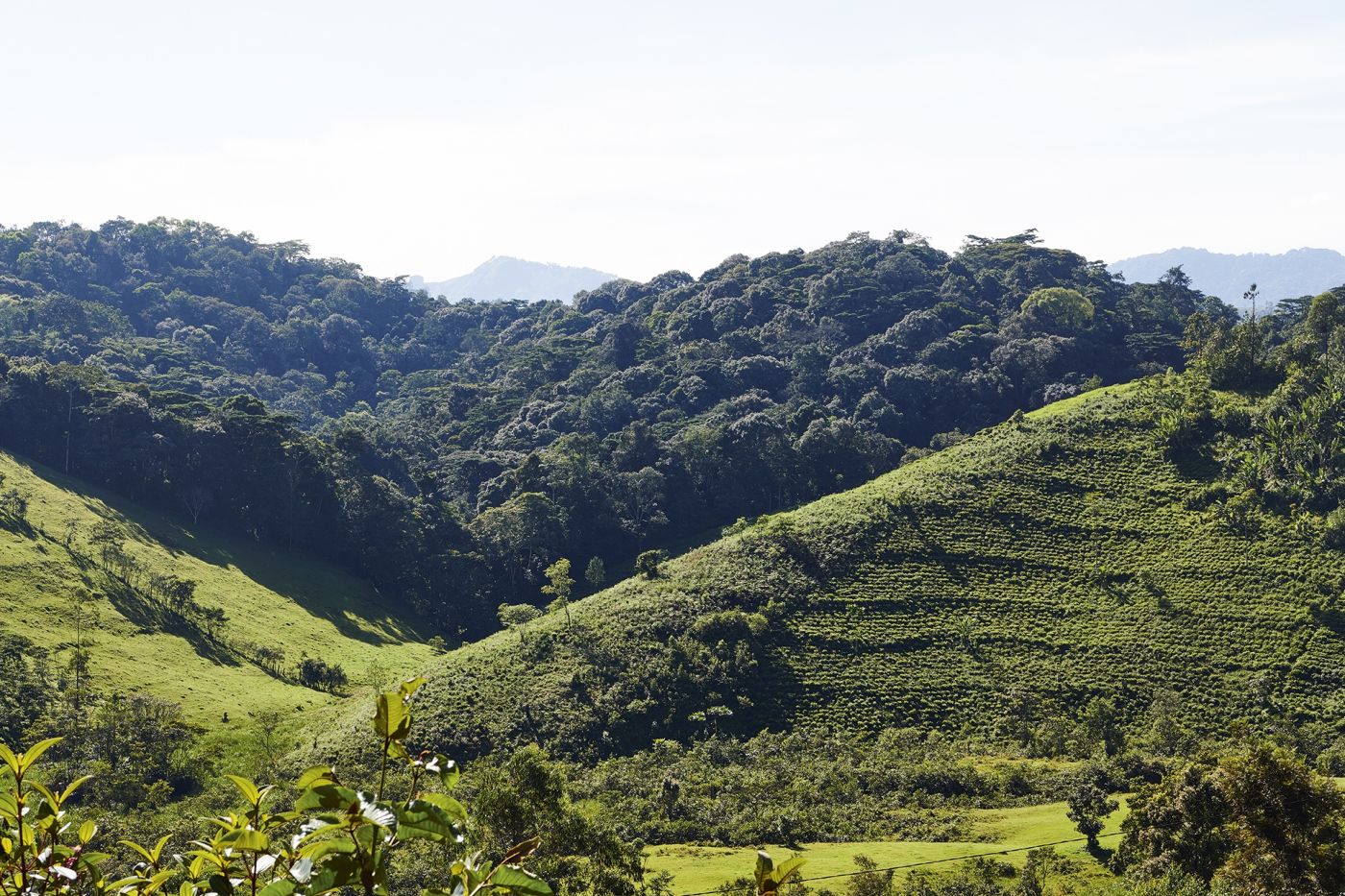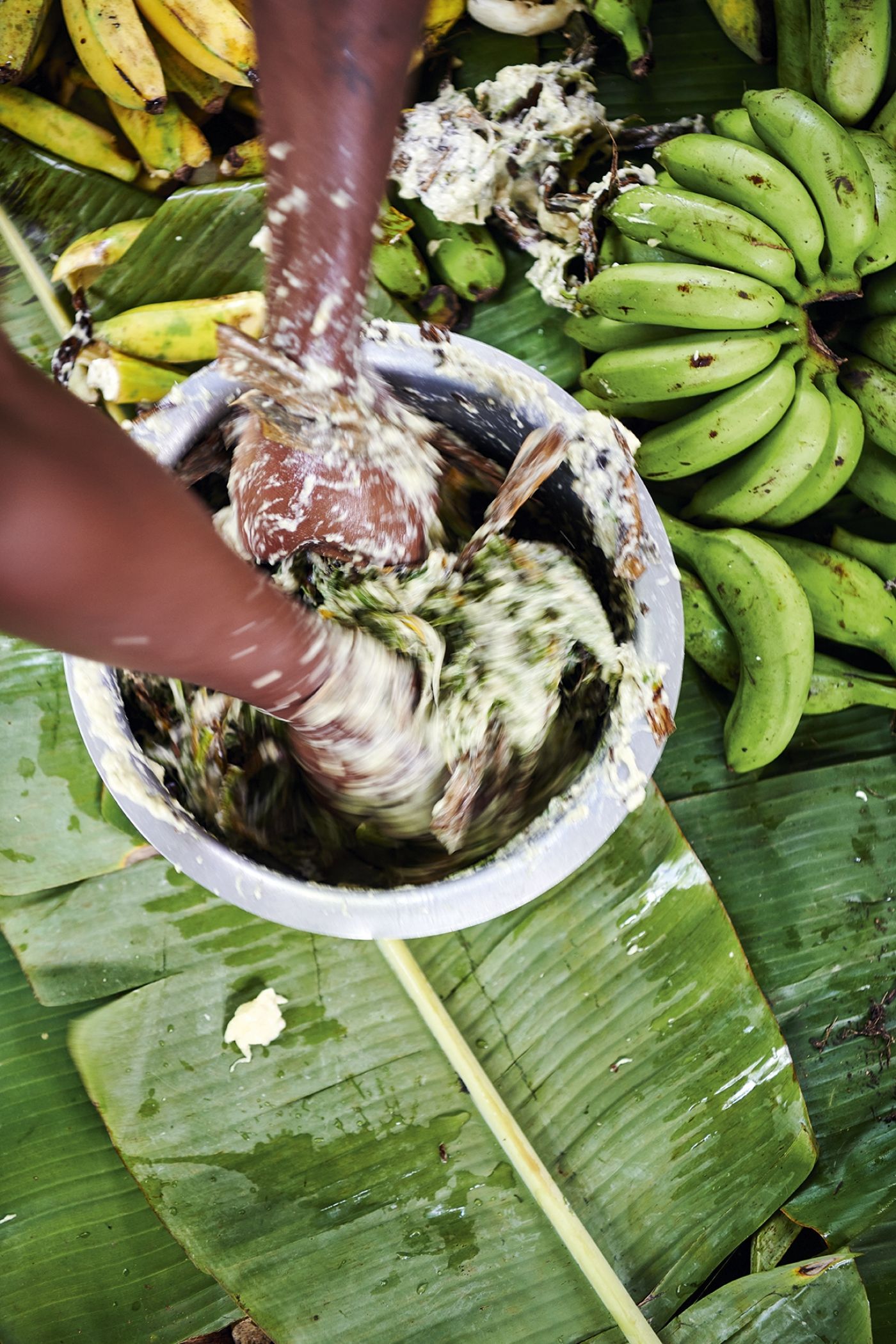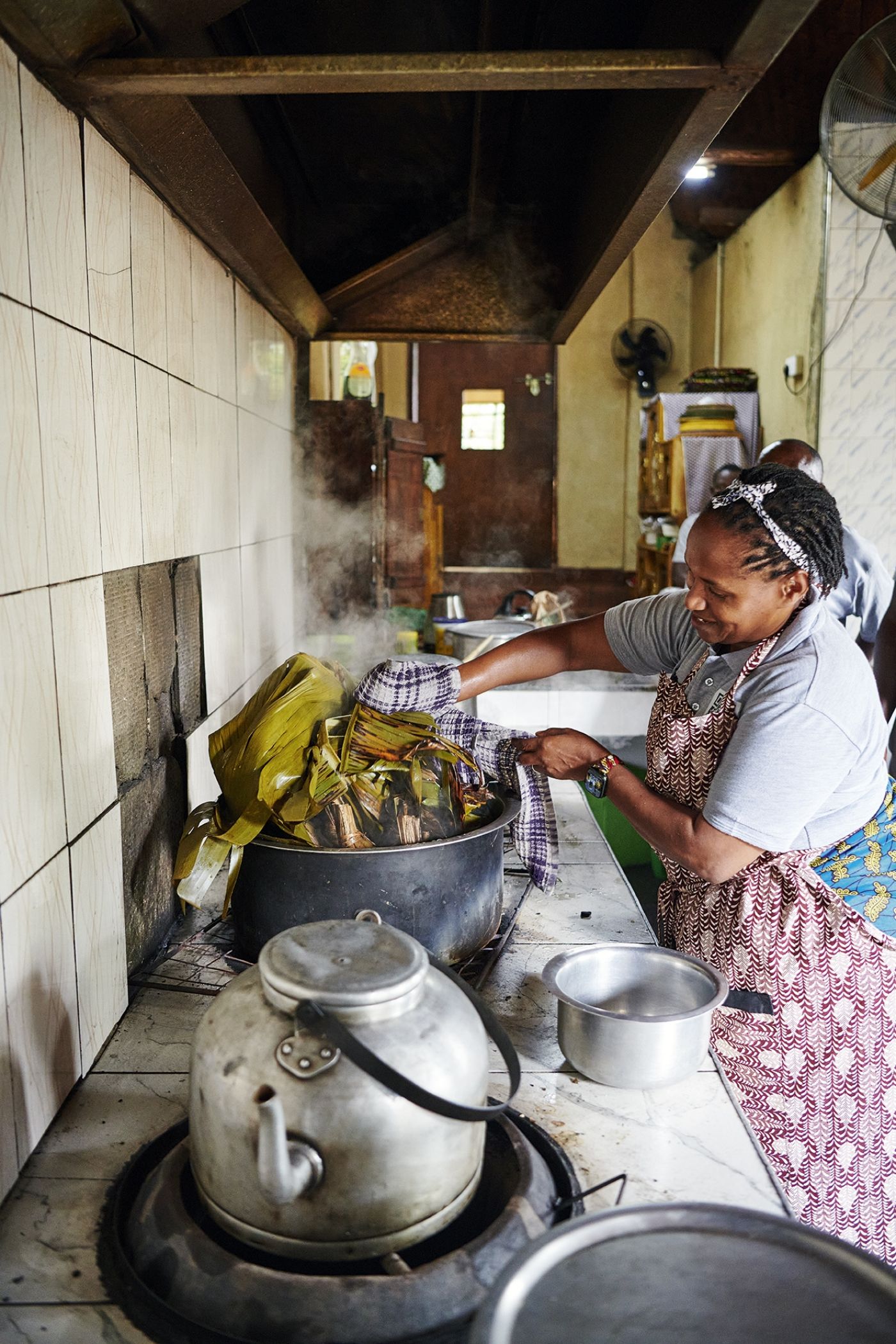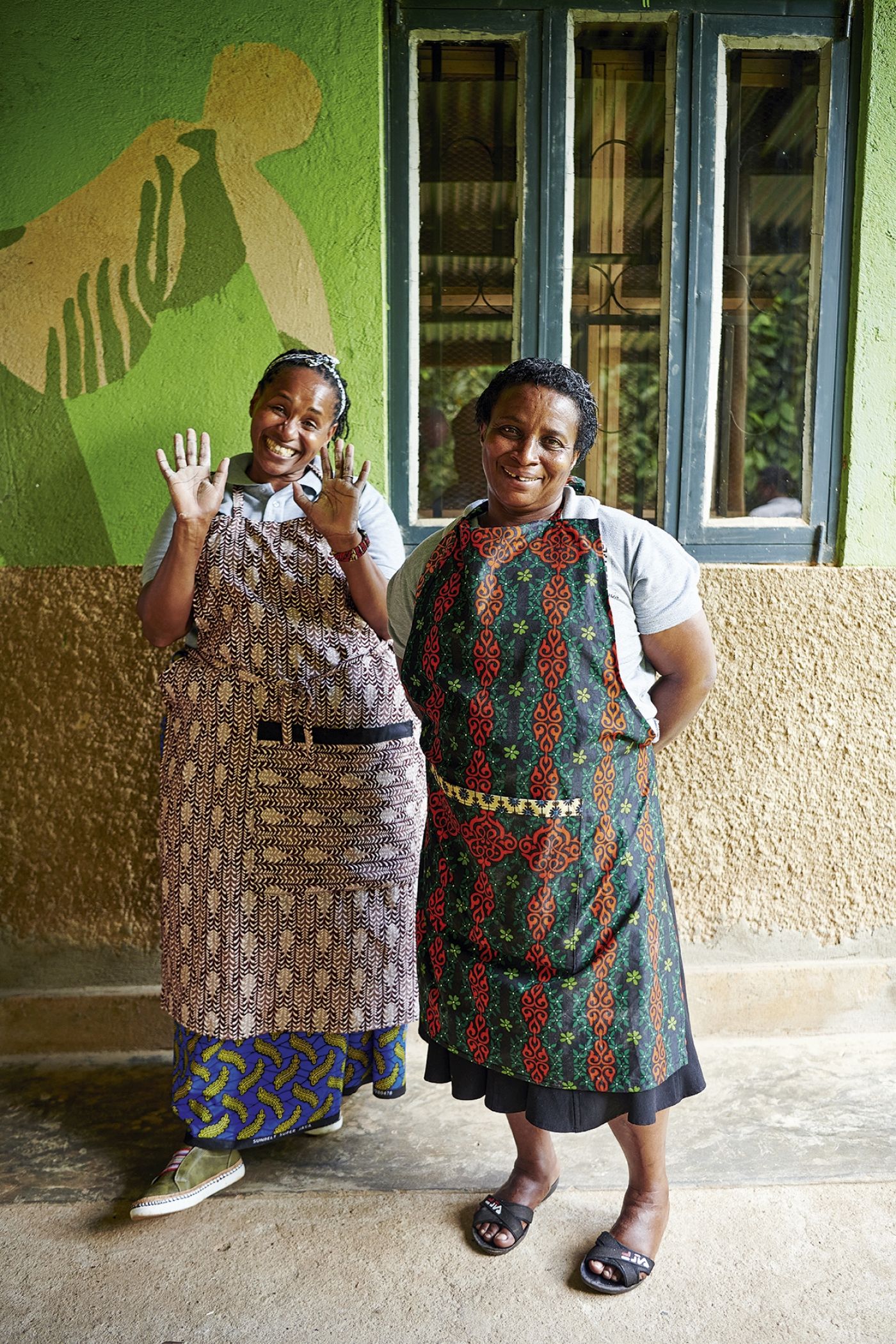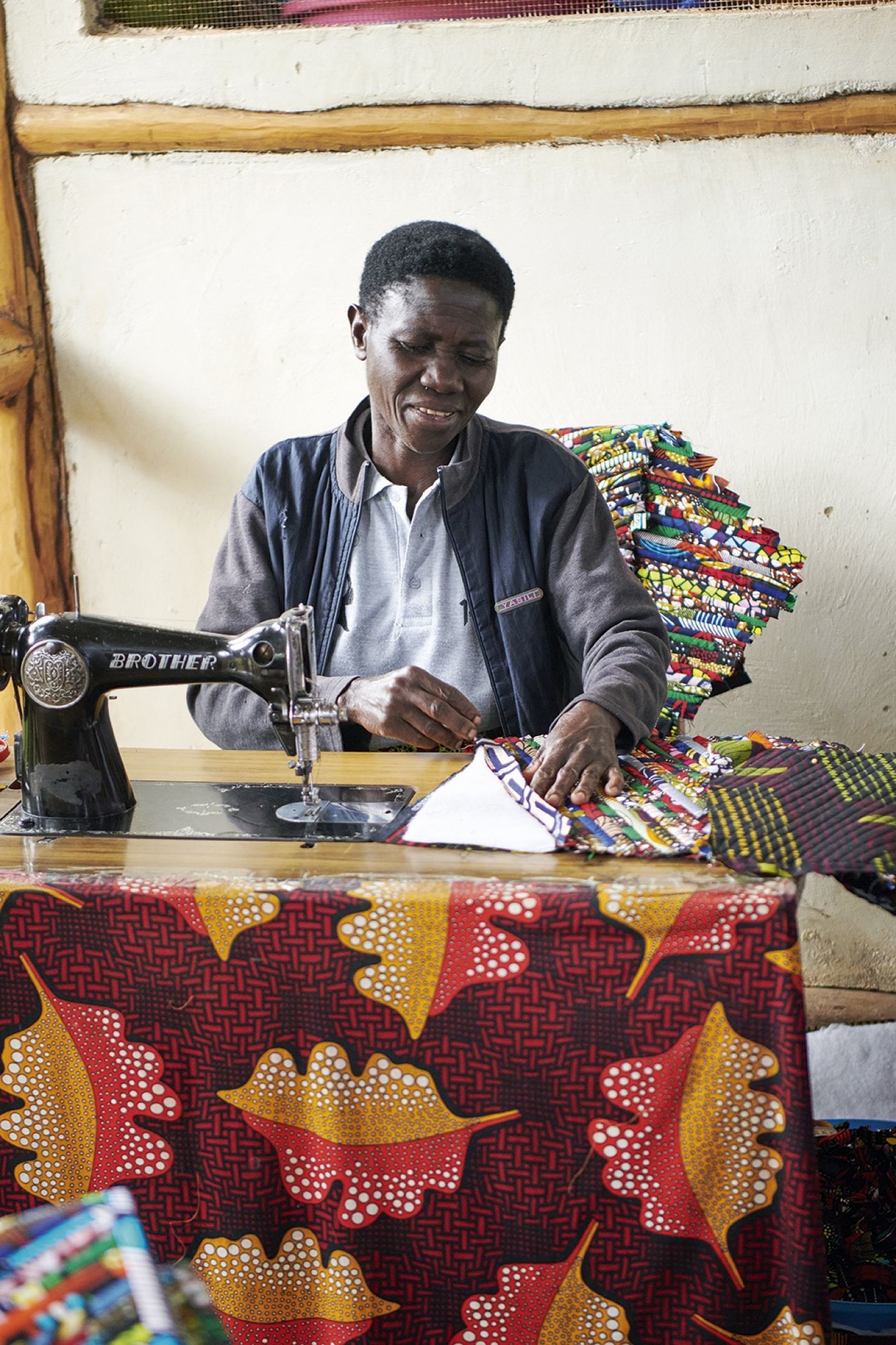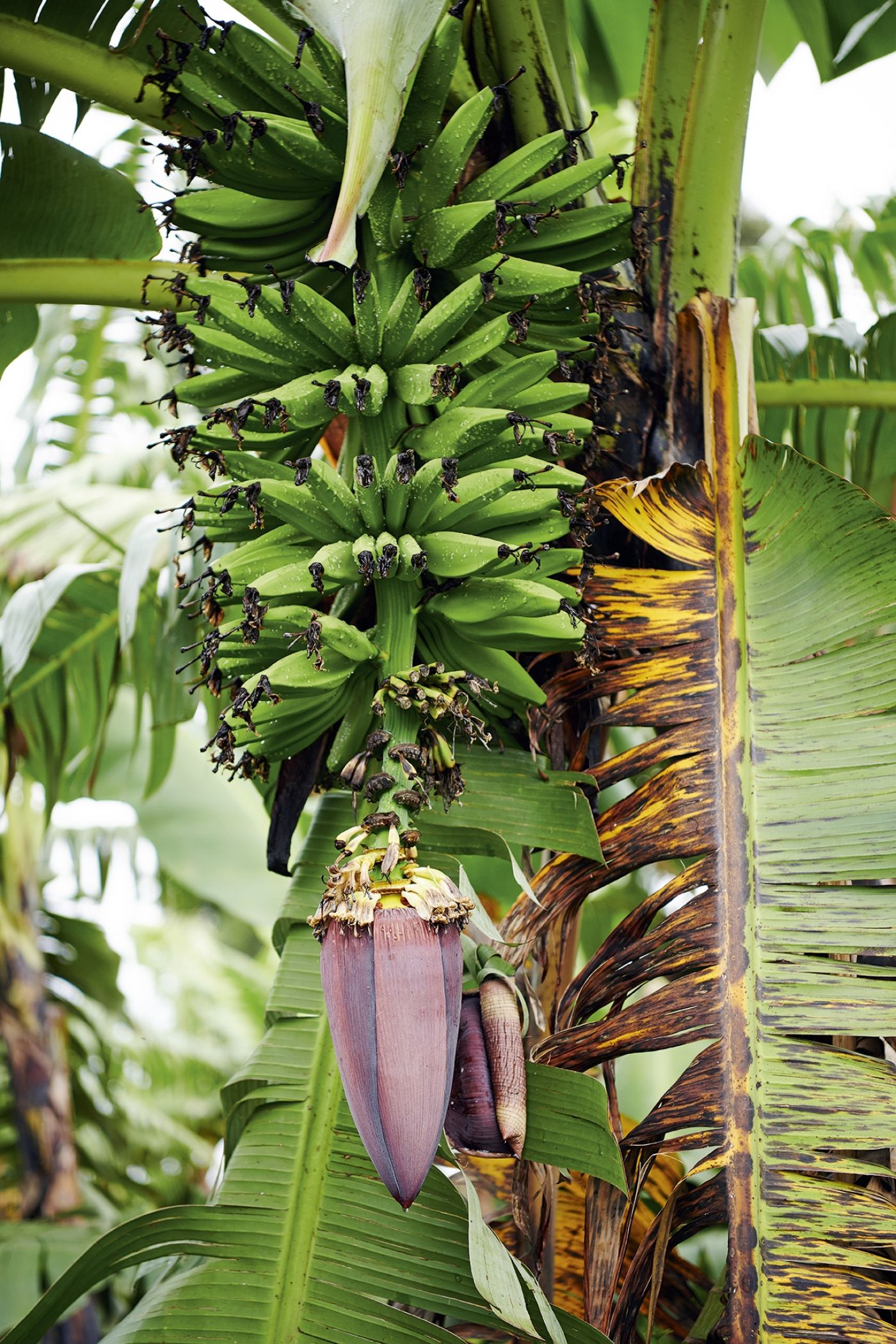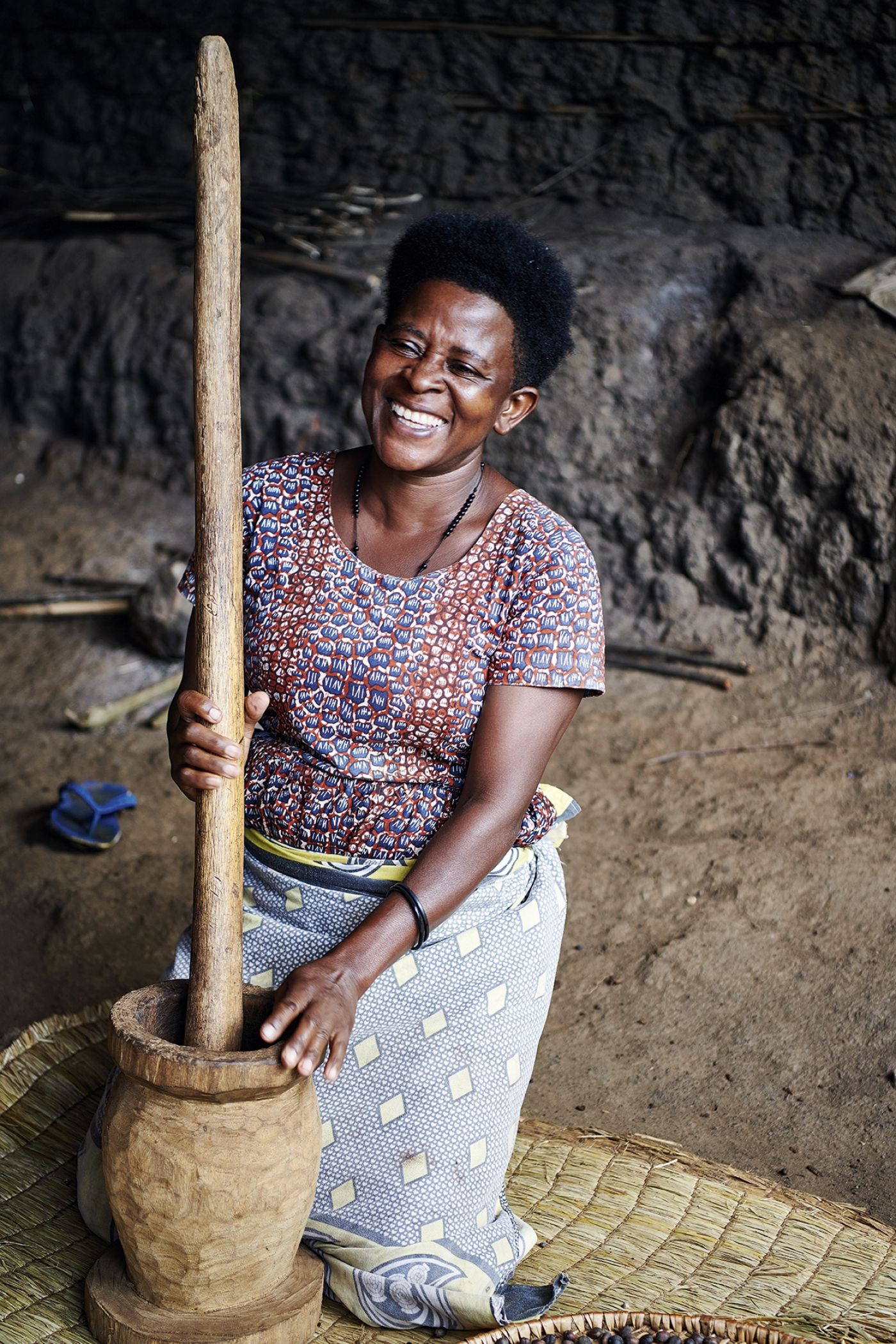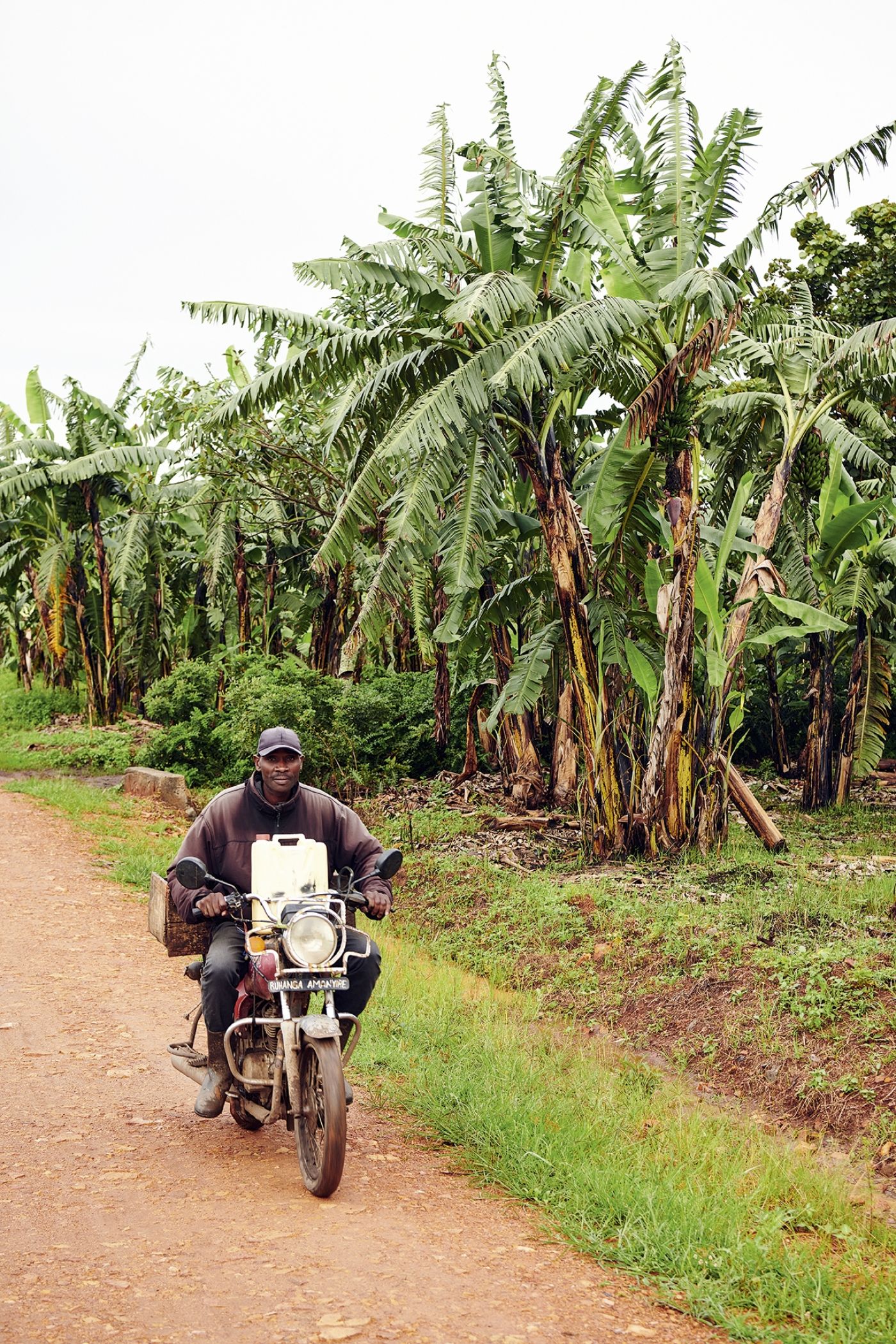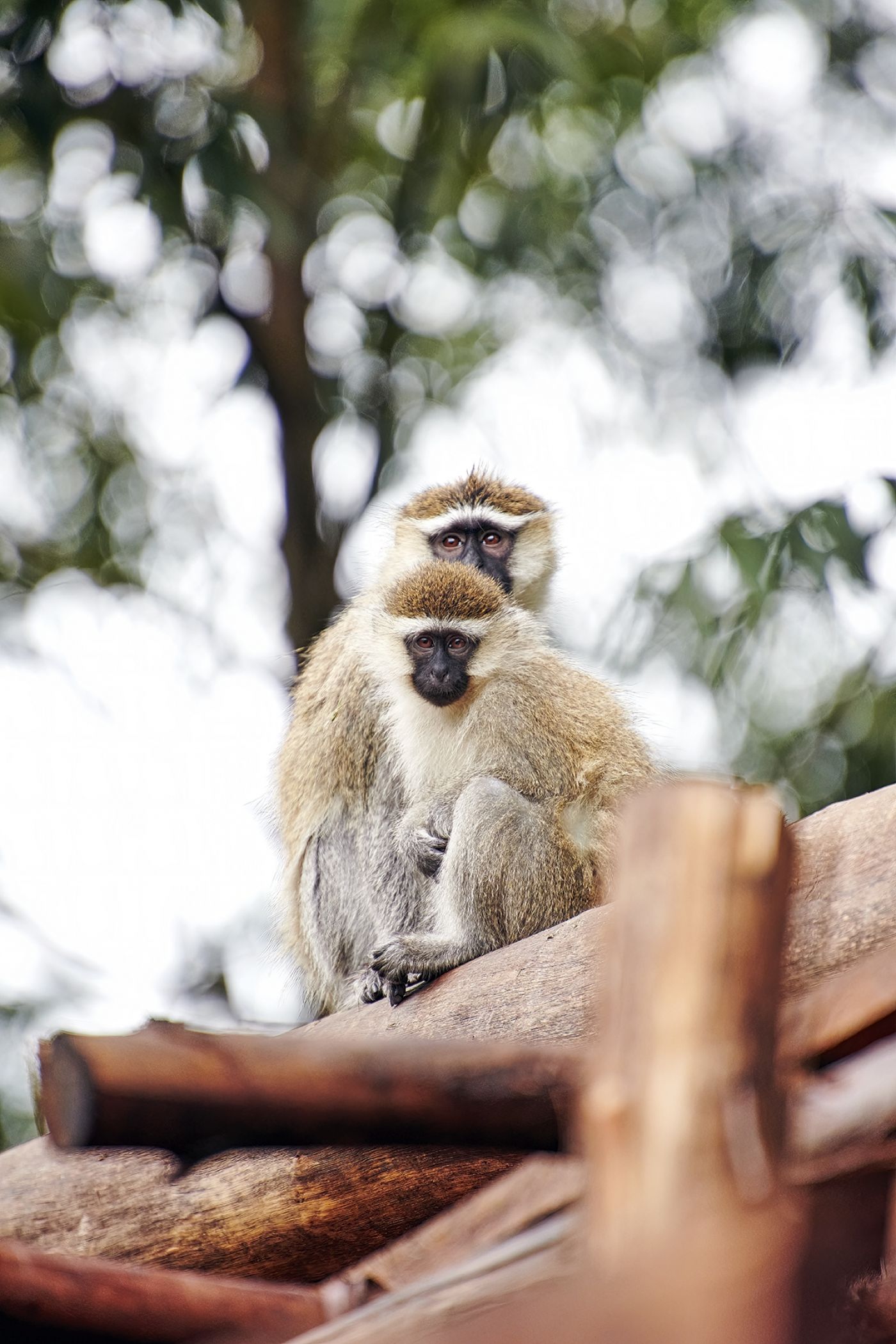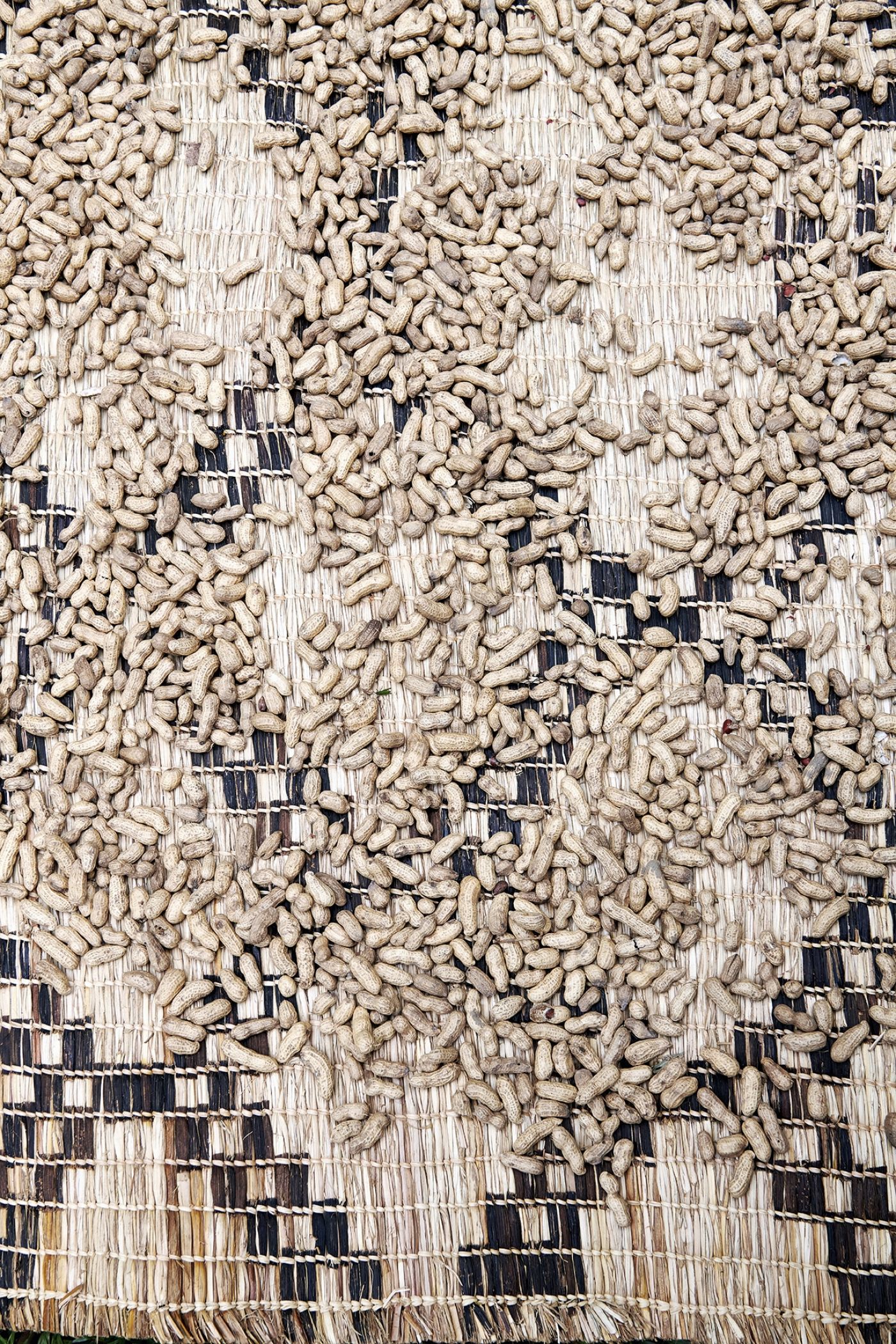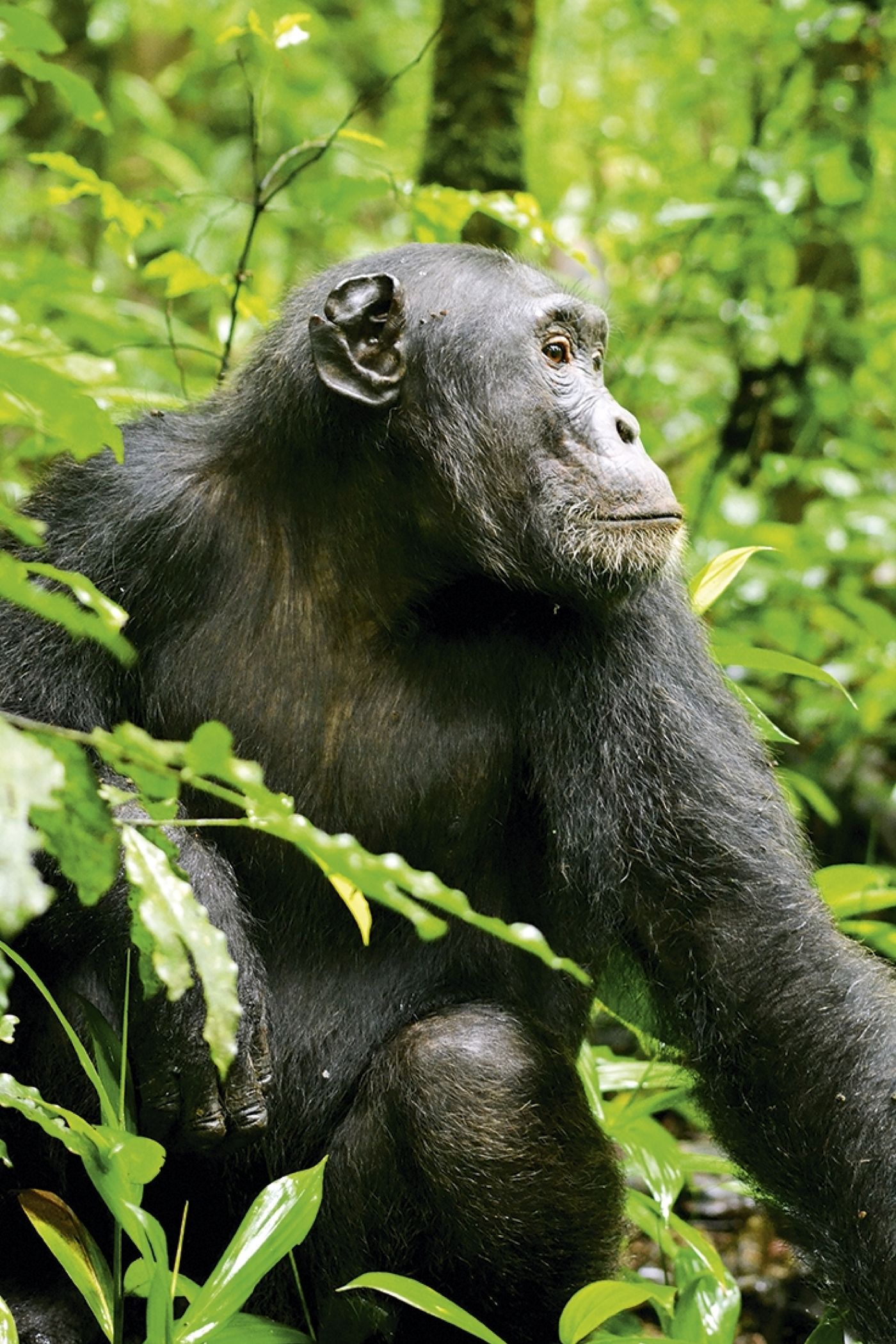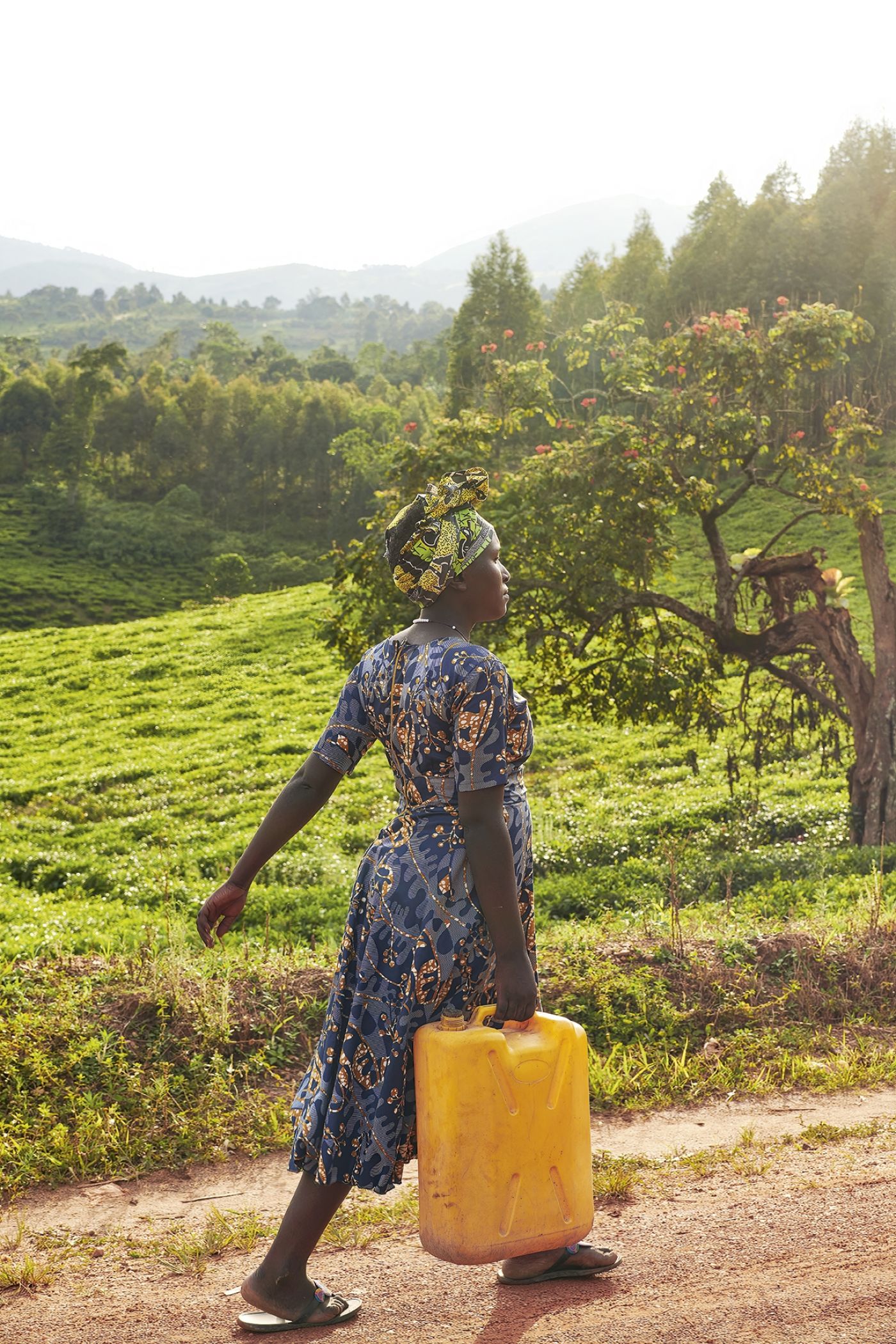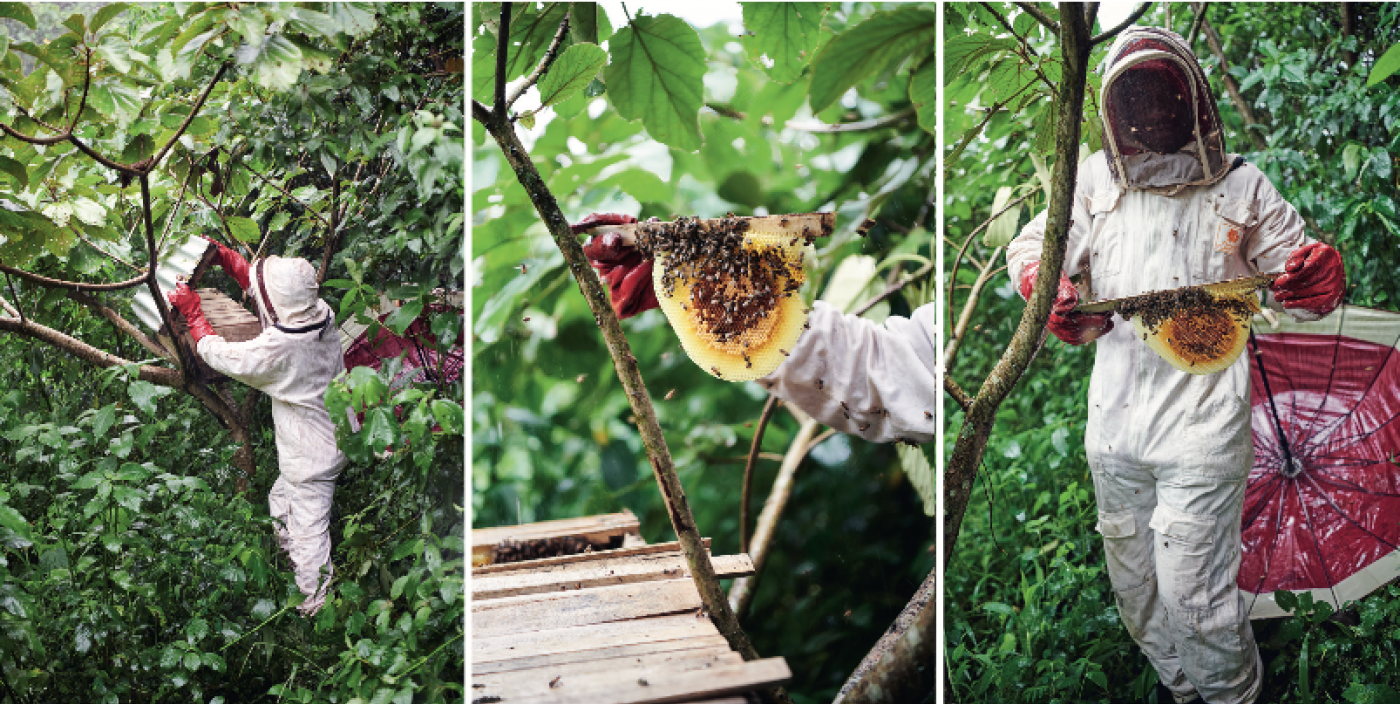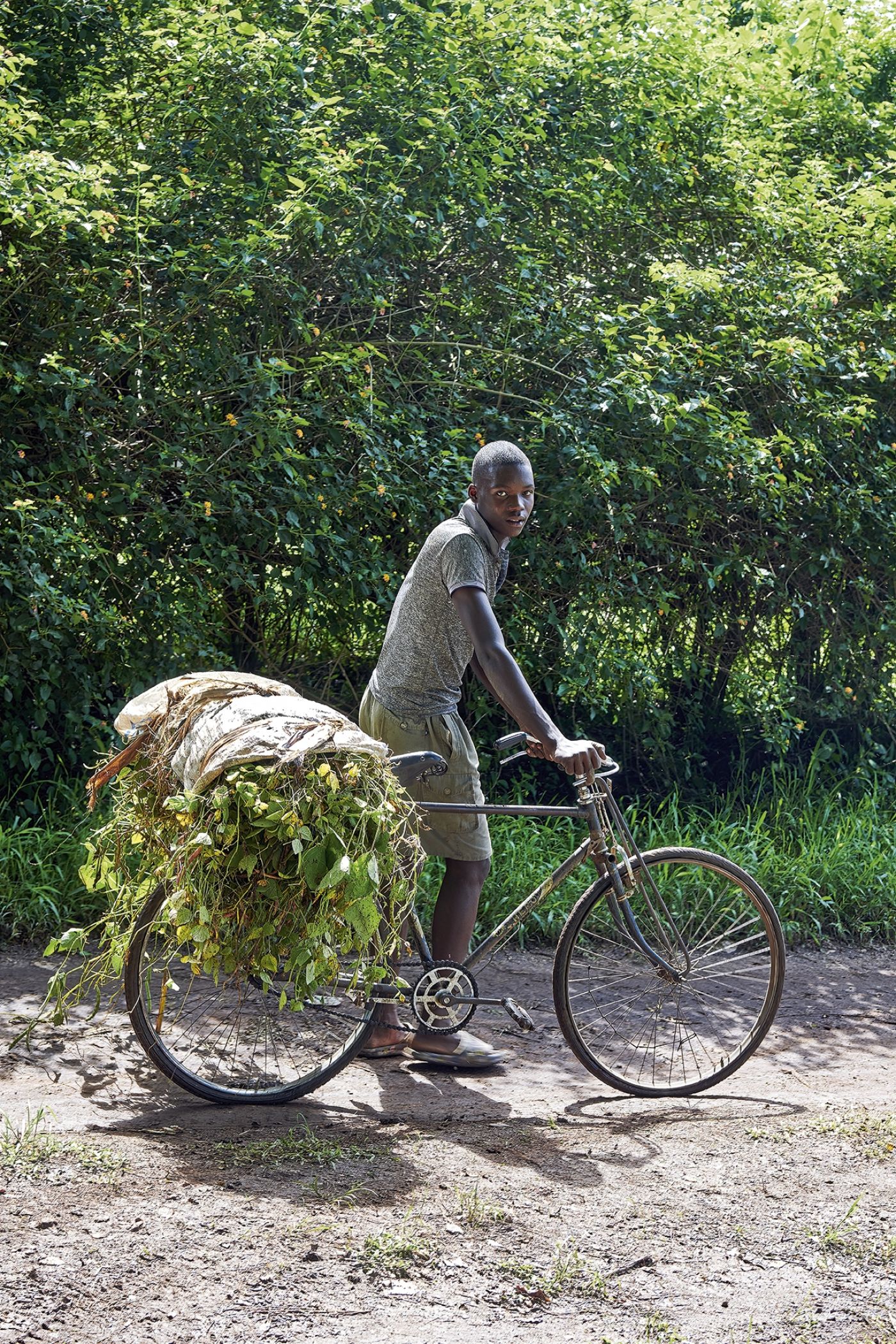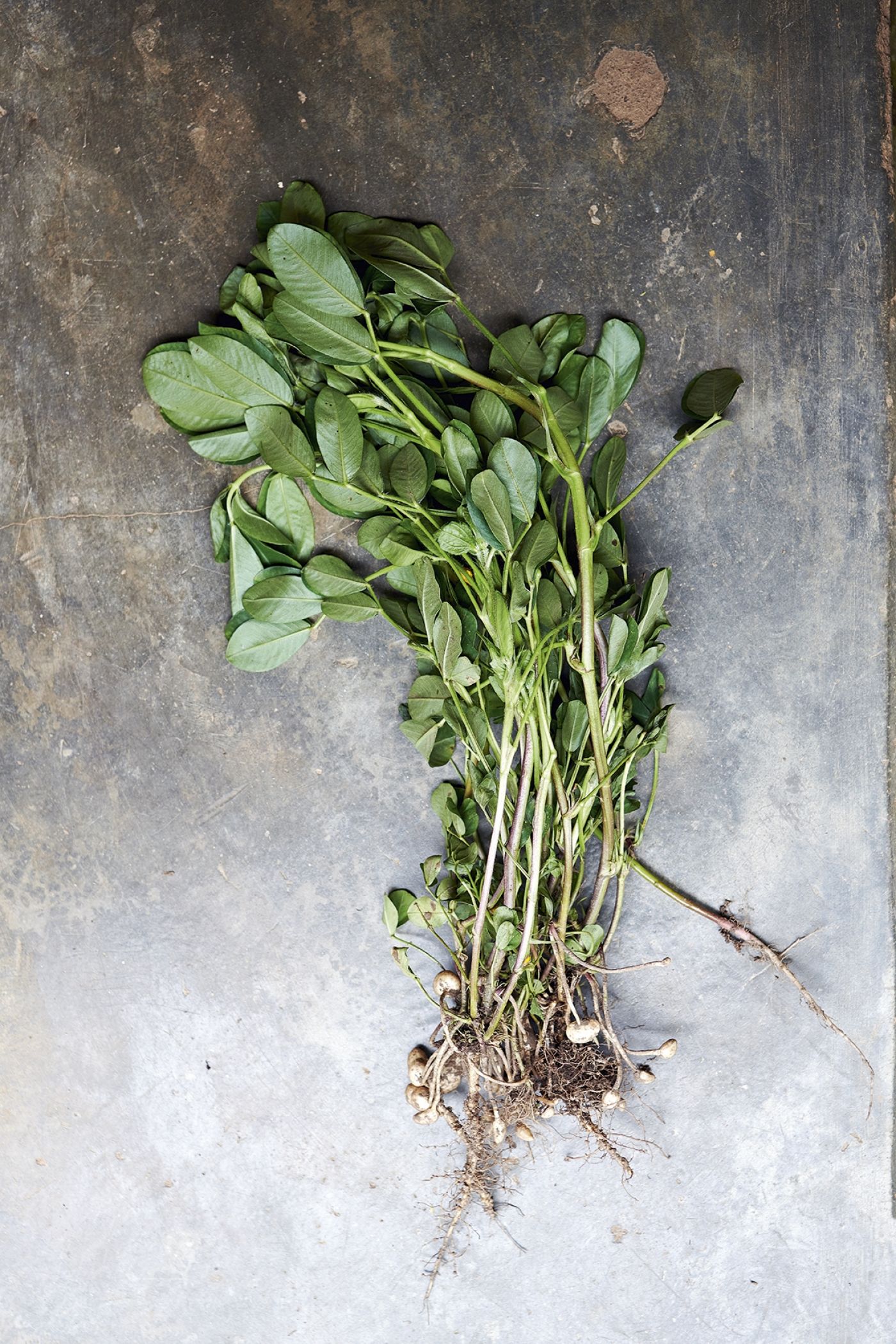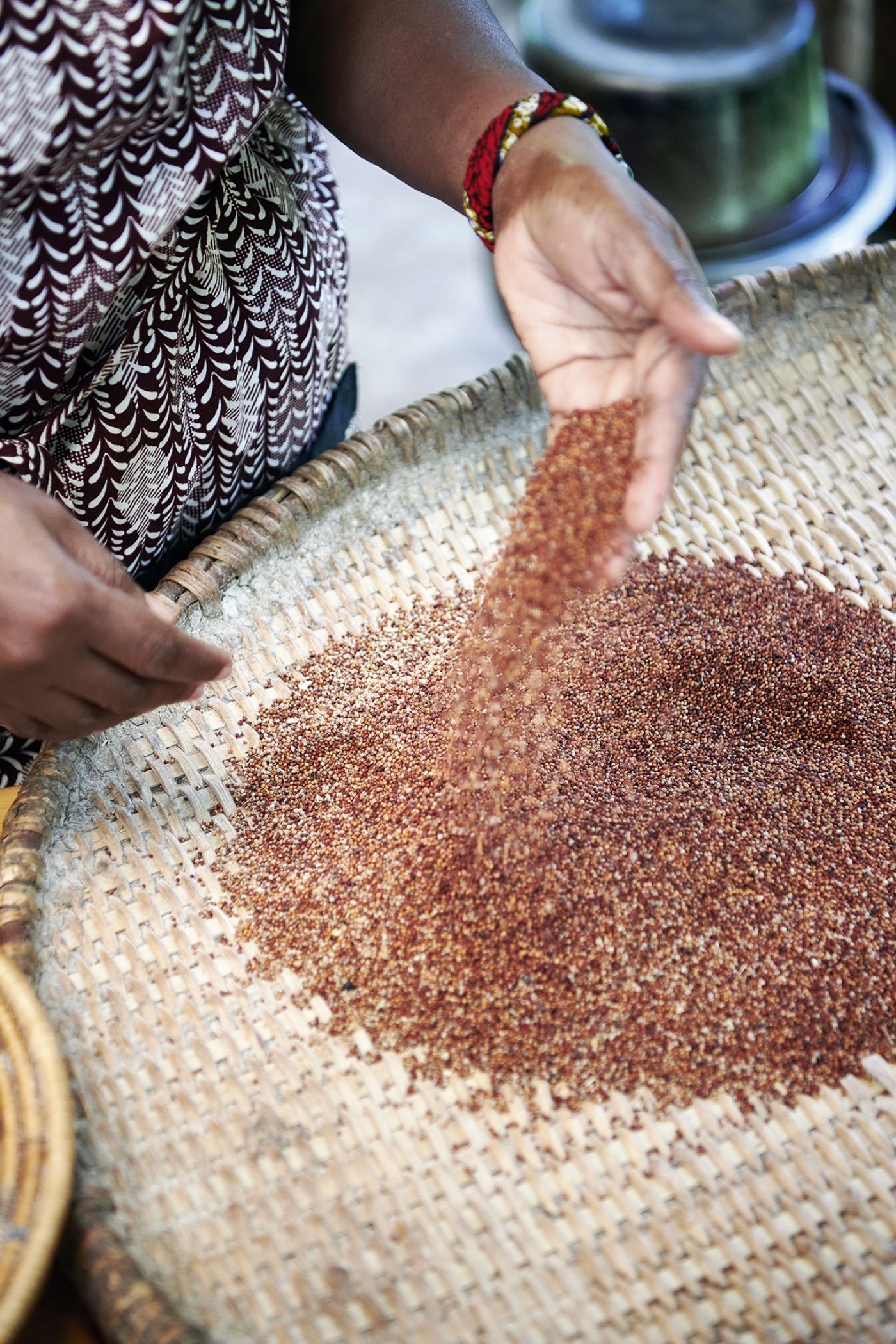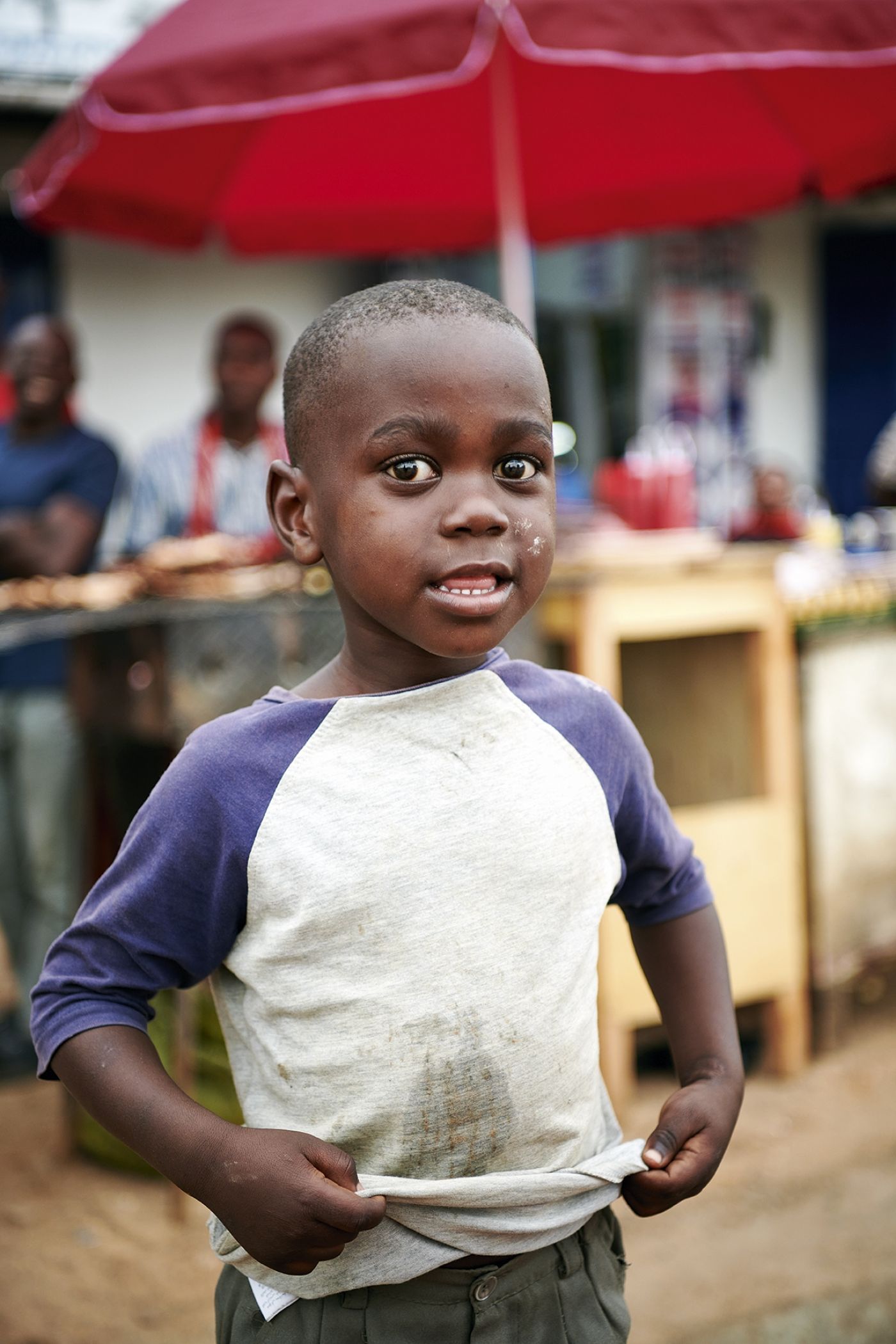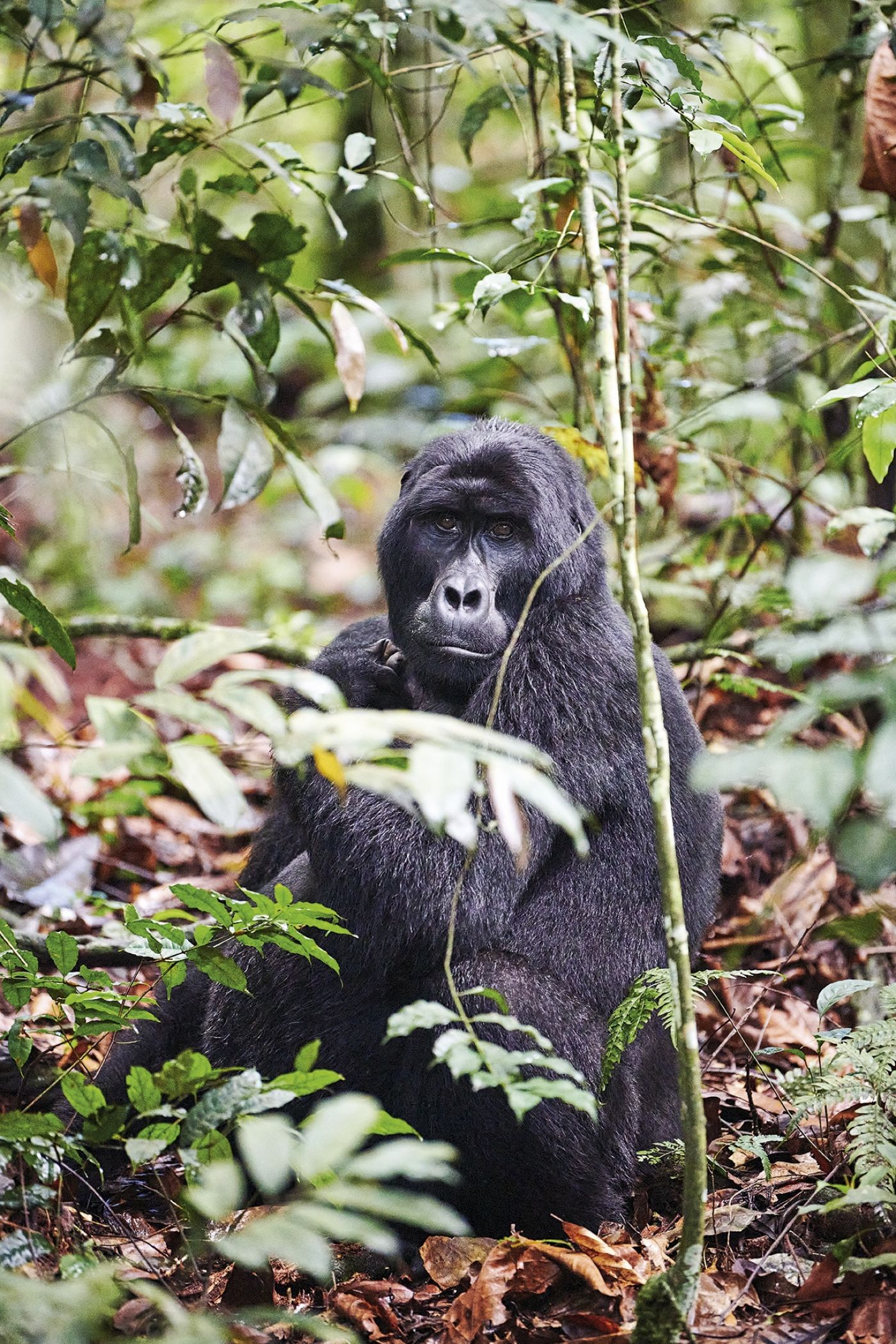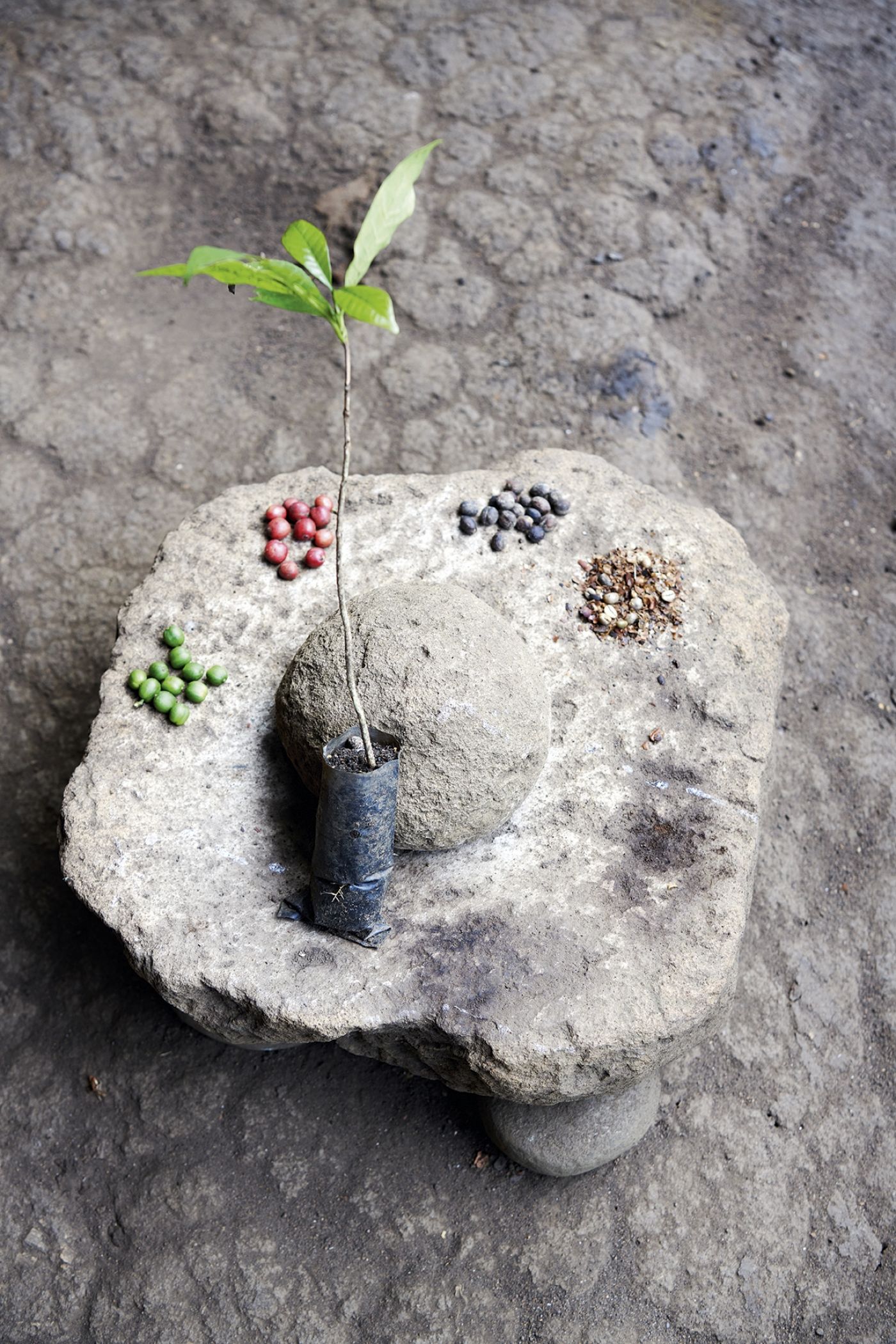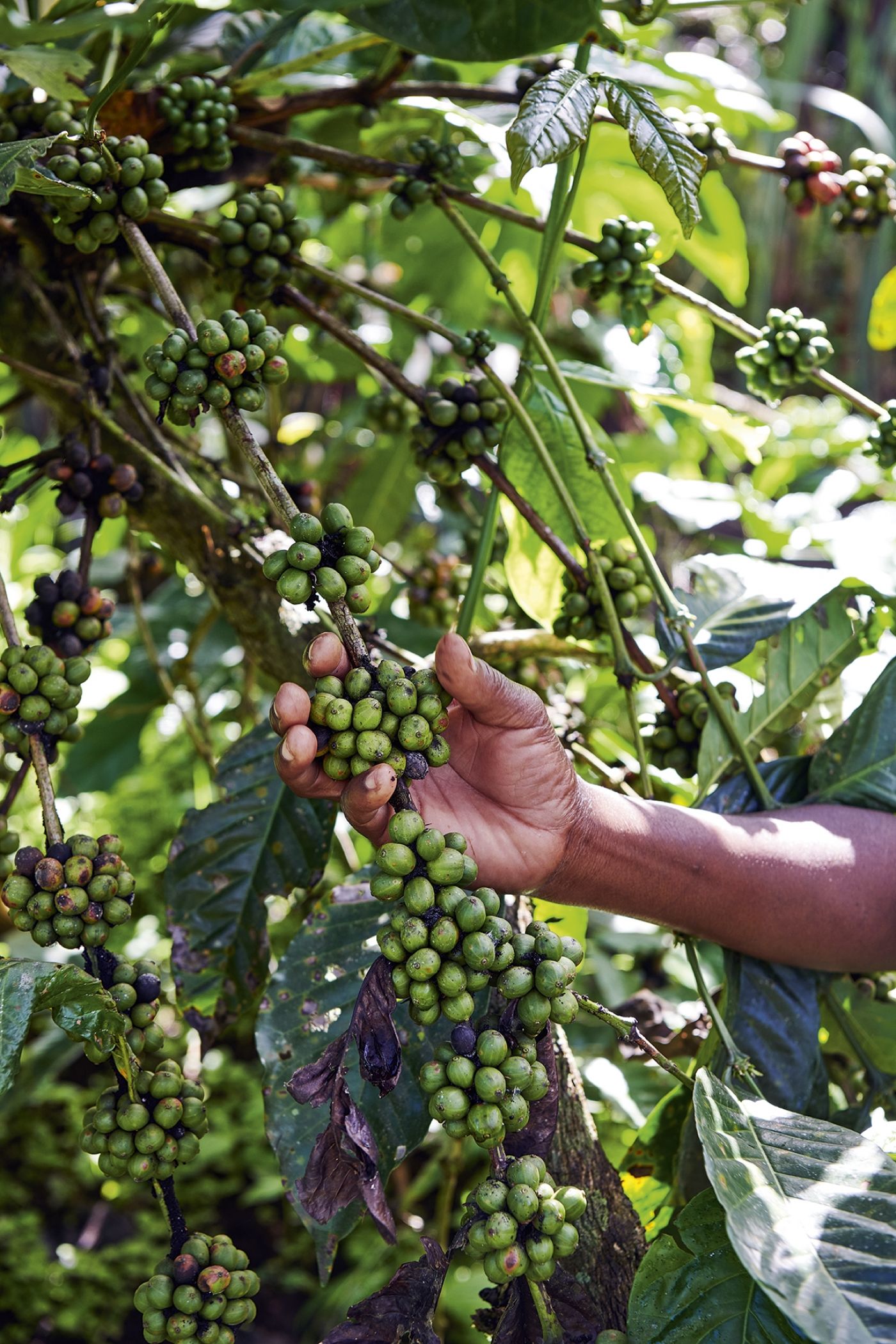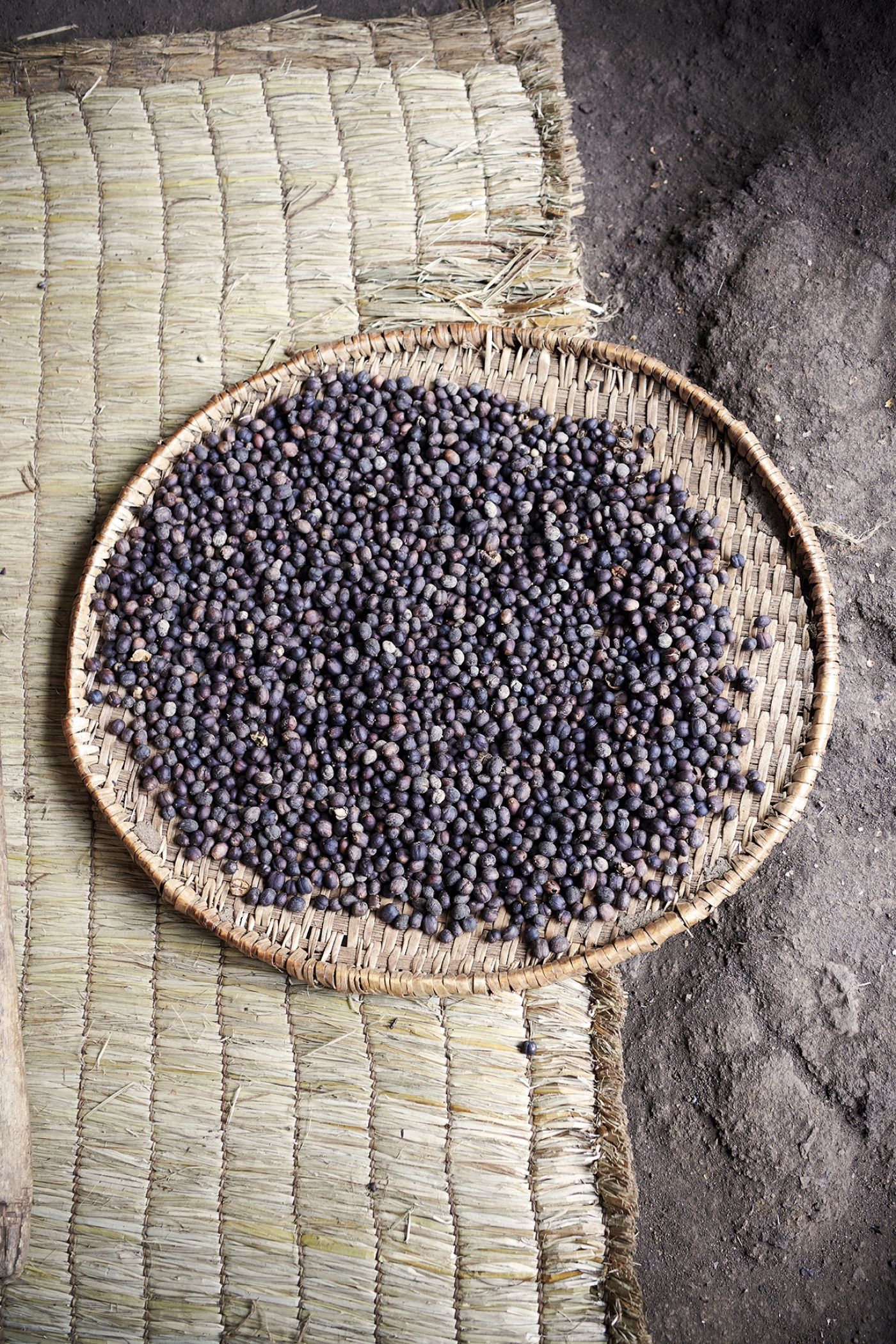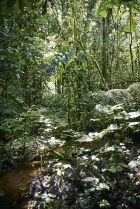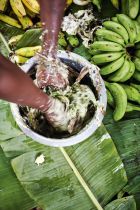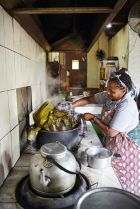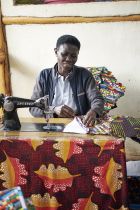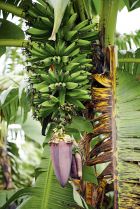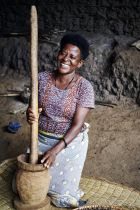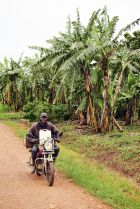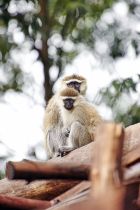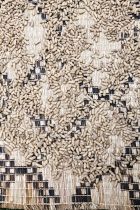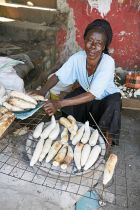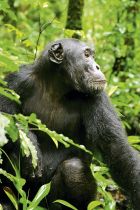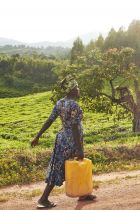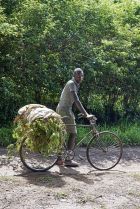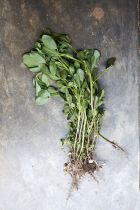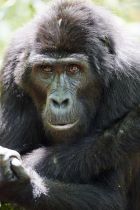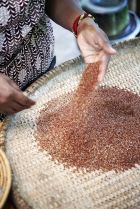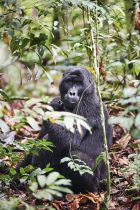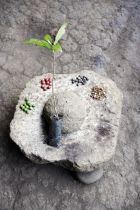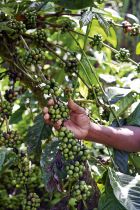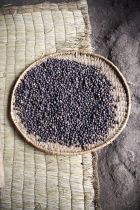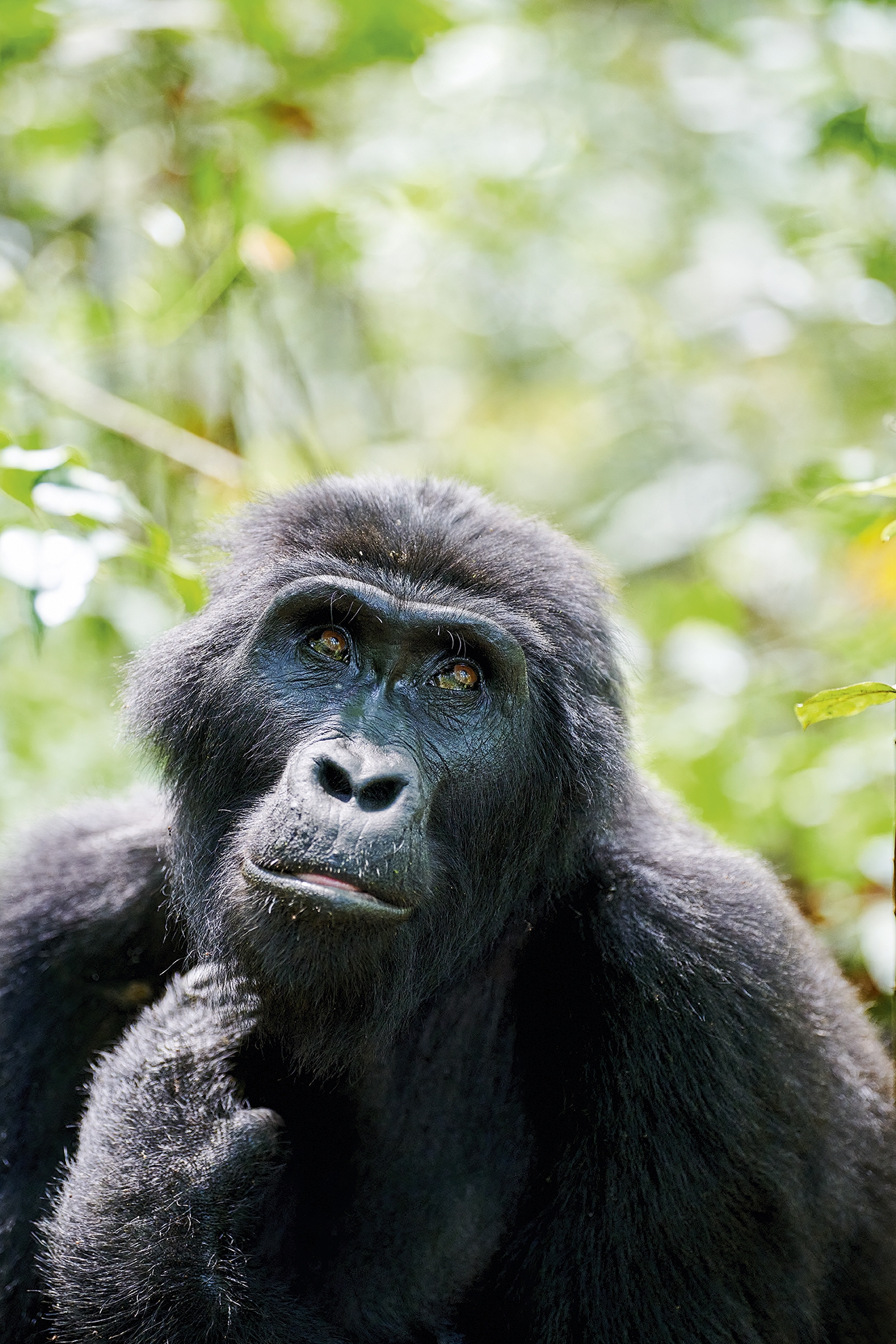
Food and Travel Review
The man with the gun is doing a far better job of staying upright. The black metal tip of his rifle doesn't even swing as he stomps downwards, the forest parting not a jot for his regulation boots. If anything, the canopy appears to be closing in.
What began as an uphill hike into Uganda’s Bwindi Impenetrable Forest has turned into a sharp descent down a marshmallow mountainside. The forest floor is so thick with leaf litter, humus and slick, dripping ferns that feet are pillowed, sinking and springing down a sheer hill in unpredictable measure.
The great apes of Bwindi have clearly got the right idea, hulking their huge charcoal bodies on fists and toes when they’re not ensconced in treetops. This 331sq km wilderness in Uganda’s south-west corner is home to almost half the world’s population of gorillas. Anyone who has wandered its paths speaks of meeting them as something magical, a momentous communion with a species so close to our own, but there’s no doubt this dense, dark woodland adds to the enchantment.
Bwindi also hosts some 357 bird species, but today the forest is eerily mute. We’re accompanied only by the soft psithurism of strombosia leaves and the occasional yelp as a step down proves thigh deep. Ahead of our small party of guide, porter and armed guard, machete-wielding trackers have already slashed their way to the gorillas. After 50 minutes wending around moss-matted trunks, we climb a ridge and suddenly spy our first.
A male gorilla lies insouciantly across our path, his broad argent back to us. He doesn’t turn at our approach; instead, a smooth, shiny, black hand reaches behind to itch a furry buttock. Magical doesn’t seem quite the word, but that homely human gesture is strangely delightful. He doesn’t tarry but lumbers off, shinning up a tree without offering a single glimpse of his face. It takes an hour before we see another. In spite of their extraordinary size, gorillas are largely herbivorous, spending the majority of the day chewing their way through treetops.
As they sun themselves high above, we stand below in the close, breezeless heat, un-cricking our necks to swat cocktail ants. The only signs the apes are still around are the rustle of branches and the occasional, un-ethereal fart: a diet of leaves has its downsides. But soon enough, a whoop comes from across the way, and we scurry under vines and over fallen trees that crumble like wet cake beneath our boots. Kajura, a female, sits quietly preening fleas and ticks from her long thick hair. Her dark marble eyes take in the humans about her, occasionally holding their gaze, and the short distance between us all but disappears. It’s the promised moment, a poignant shift surrounded by the smell of earth and the sting of insects.
The spell is broken by Kavuyo, a colossal silverback who ploughs through sharp branches like they’re bulrushes. He exits the forest, our pack on his trail, to emerge in bright, open fields. He slumps down and casually tears a young tree in two with one hand. We watch his meal in hushed awe, pearly teeth gnawing through fresh shoots, before he feels too scrutinised and stalks back into the trees, a flash of silver dissolving in the impenetrable dark.
Tourism centres on these gorillas, an understandable but fish-eye view of what the self-styled ‘Pearl of Africa’ offers. Hemmed in by five countries and the vast banks of Lake Victoria, it’s a country partitioned by people. Some 56 tribes are spread across its landscape, from the verdant south to the northern savannahs. Many communities form isolated pockets along dusty, pot-holed roads – a driving experience locals call the ‘African massage’.
Buhoma is a stone’s throw from the border with the Democratic Republic of the Congo. Home to the Bwindi’s visitor centre, the community here relies on gorilla tourism: none more so than Ride 4 a Woman. An awkward mouthful of a name, this initiative started by Evelyn Habasa began life as a bicycle repair and rental shop, then re-formed itself into an indispensable safety net. Ride 4 a Woman is run by domestically abused women from the community. In a country where bride-price is still paid, abuse is widespread and options can be limited. Ride 4 a Woman has cracked open the domestic cage, providing some 300 women from 11 villages with an independent income through sewing, cooking and micro- finance. They offer filtered water to the entire community, raise scholarships for over 180 children and give families goats and seeds. Tucked away behind high walls, their guesthouse and workshop are sunk into a lush garden where the majority female staff offer dance classes and cooking tutorials.
Evelyn, a maternal woman with a ready smile and steel in her spine, demonstrates luwombo – a celebratory dish from the Buganda region. She begins by searing a fresh banana leaf, ready to receive a stew of onions, tomatoes and Irish: the Ugandan name for white potatoes. A little water is added, followed by chicken, and the folding begins. Leaf over leaf, her quick fingers gather and tie threads of banana fibres under and over with practised ease. The result is an elaborate packet of emerald origami, a large green wonton that’s placed over hot coals to cook. What emerges in a plume of steam is a moreish, rich stew imbued with the perfume of banana leaf.
The luwombo is added to a table of goat, groundnut sauce, beans, greens and kalo. A squishy millet ‘bread’, the kalo is freshly made with the help of Edna, who pounds and winnows harvested millet before it’s brought to a traditional mineral stone for grinding. Everyone takes a turn – particularly the passing men – but at celebrations it’s a day-long job often given to children.
As well as vegetables and crops, the refuge make their own honey. Here, bees are more than just pollinators and honey makers: they’re tiny employees, their hives kept about the edges of forests to keep large animals like elephants away from villages. The guesthouse hive is wedged among the branches of a tree along the riverbank, hovering between jungle and garden.
The kind of feast before us is a rarity in Uganda. While tourists tuck into buffets of multiple meats, sauces and vegetables, most families never see such abundance. When asked what the national dish of Uganda is, no one has a real answer, suggestions swinging between matoke and posho: two rather tasteless carbohydrates used to soak up sauces. Posho, a shortening of ‘portion’, is a lard-like brick of boiled maize flour. White and stiff, it’s an almost futuristic food block entirely devoid of flavour, but it’s intentionally filling and there’s something hearty about it – particularly when torn off and dipped in beans stewed in onions, tomato, garlic and curry spice. The reality of food in Uganda: variety and volume are often a luxury.
Matoke, meanwhile, arguably holds the heart of the nation: a dish of steamed and hand-mashed plantain that accompanies most meals. Banana trees smother the landscape, a staple crop that grows easily in anyone’s backyard. Hardly surprising, then, that locals have found multiple uses for it, including alcohol.
In the little town of Bigodi, some six hours north of Bwindi, lives Bananaman. His real name is Dennis, he explains, as he single-handedly squeezes a butter-coloured fruit out of its peel every second, although he isn’t sure anyone in the town knows his actual name. He is, simply, Bananaman, and he makes banana beer and gin to sell to bars and locals alike. His shop, Rest in Bananas, is named for the potent effect of the alcohol, which is reputed to leave drinkers comatose until the next day.
Bananas, lightly smoked under a makeshift tarpaulin to ripen, are then mixed 50:50 with unripe ones and the two are peeled and mashed together by hand. Into the mix is added an inexplicable amount of shredded speargrass, a plant that’s said to act as a natural filter when rubbed and wrestled into the green-and-gold mush. After adding water, the fragrant mess is filtered through a banana leaf into a bottle. While it can be drunk immediately as a light, refreshing juice with an almost citrus tang, it’s far better when fermented with sorghum yeast and black tea. The result is sweet without being sugary, a beautifully balanced beer with a gentle background of banana and tea tannins.
The gin, however, beats it. Made in two strengths – 40 per cent and 60 per cent ABV – Bananaman distils his gin through a copper pipe in his pond, although his forebears used to do it in a fresh stream. Known as waragi, the gin is incredible: the lower-alcohol version gives a nose of a banyan and fire in the belly, but the stronger liquor is a serious hit, tasting of salt and syrup with a napalm blast that seems to grow from somewhere behind the lungs. Although wine and regular beer are popular in Uganda, locals are more likely to sip on banana-based alcohols.
While large swathes of Uganda’s west are carpeted with tea plantations, Bigodi’s north has a smattering of coffee. Here, Akiiki, ‘the queen of coffee’, grows, harvests, roasts and grinds beans by hand, in the quiet shade of a mud hut. Though soft-spoken and girlishly giggly, Akiiki holds nothing back as she pounds coffee beans with a mammoth pestle and mortar. Sun dapples her work as she winnows, grinds and cooks the beans over a fire, before adding water and pouring the freshest possible cup of coffee. Richly toasted but devoid of bitterness, it slips down soothingly.
From Bigodi it’s only a short hop to Kibale National Park, where the rest of Uganda’s primate species live. Kibale’s 766sq km have one of the highest concentrations and variety of primates in Africa. Its main draw, however, is the chimpanzee, whose haunting shrieks echo across the canopies. Perceptive and resourceful, chimps are known as the brightest of the great apes and the closest to humans. It’s easy to see why as they seek us out, posing knowingly for photos before heading back into the trees to feast on fruit. Where the great, ponderous gorillas carry a childlike simplicity, the more nimble chimps wear wisdom like a woolly mantle.
Back on the road to Kampala, wind-shredded banana groves and shades of green disappear, replaced by the padded heat and rumbling kaleidoscope of townships. Stall after food stall passes by, a zoetrope of butchery. Tiered cages of chickens, a curious shop called the Mountain Pork Office, a half-drum barbecue with a smoke-billowing bouquet of charry kebab sticks called muchomo. Blink and it’s a haunch of cow on a huge hook, muscle the colour of madder. The iron smell of blood wafts through the windows before being usurped by charcoals.
Uganda’s jungle blooms and squawks with nature, and life abounds on its cluttered streets too. Smoking fires are a siren call, entire communities collecting about blackened griddles. Women and children sit outside their homes, great sheets on the ground strewn with drying beans. Atop corrugated roofs, plump cassava desiccate in the sun, soon to become flour. It’s easy to imagine this is Uganda’s true cuisine: street food. Vendors swarm any vehicle that pauses longer than ten seconds, pushing forward corn cobs and muchomo skewers typically of seared, salt-seasoned goat.
But the best snack is a great contender for Uganda’s national dish: rolex. A fusion food influenced by Uganda’s Indian migrant population, rolex (‘rolled eggs’) are a mix of onion, parsley and eggs flash-fried in a liberally oiled pan. This juicy egg futon is laid on a flaky chapati, topped with tomatoes and rolled up. Rolex are succulent, fresh, lightly greasy and filling. You can add any ingredients you like, but most Ugandans agree the key ingredients are the dust and the sweat. You can buy them in restaurants but the taste, I’m assured, just isn’t the same: the best are always made in the heat and hubbub of the roadside.
Where to stay
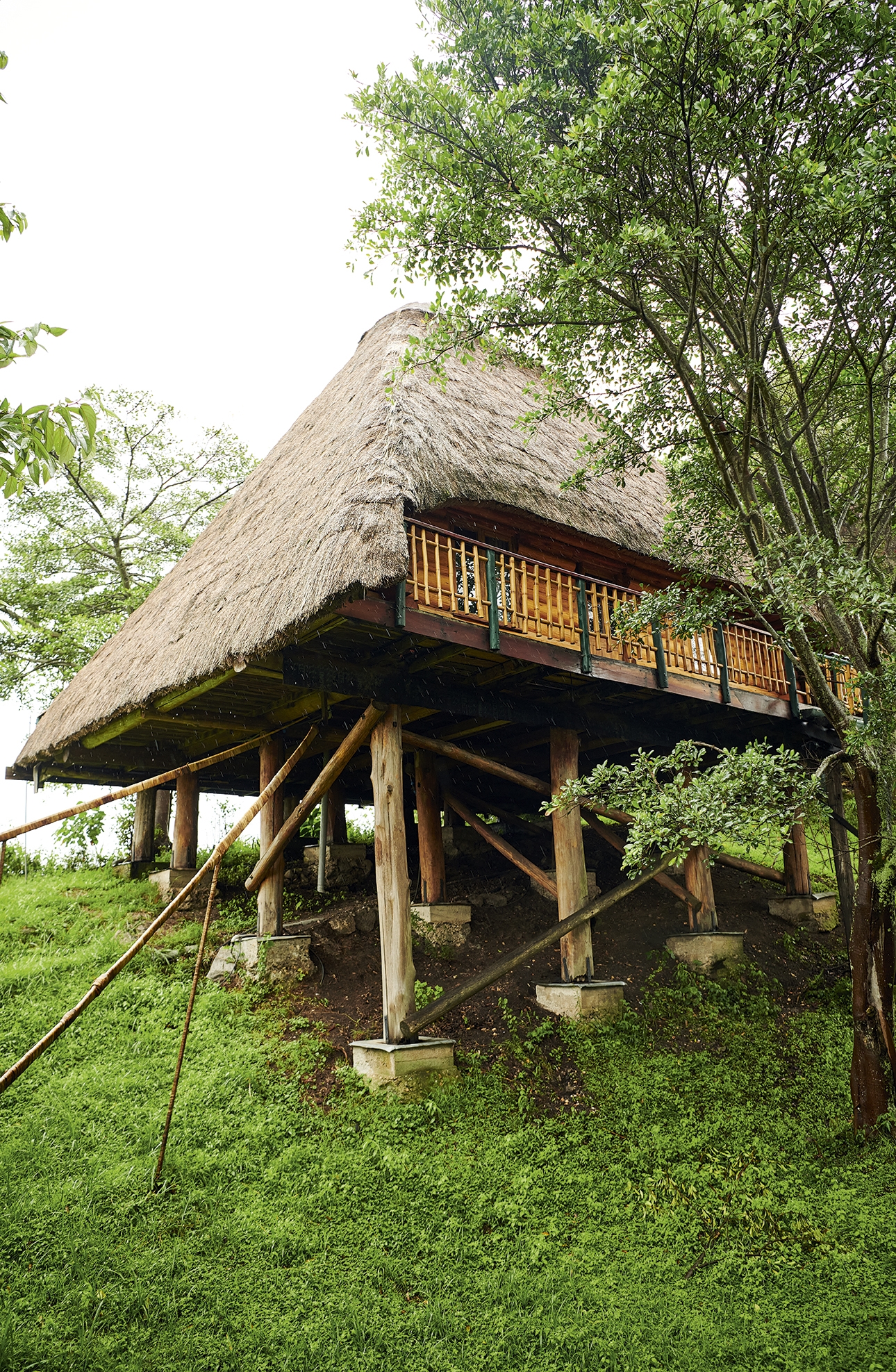
Kyaninga Lodge A luxury sustainable lodge with extraordinary thatched villas, pool, plus excellent meals bolstered by their vegetable gardens. Overlooking Kyaninga’s crater lake and Rwenzori mountains, the lodge is an hour from Kibale’s chimpanzees. Owner Steve is committed to community and ecology, reforesting the area and creating a workshop to provide terrain-appropriate wheelchairs to disabled children. Doubles from £267. Fort Portal, 00 256 772 999750, kyaningalodge.com
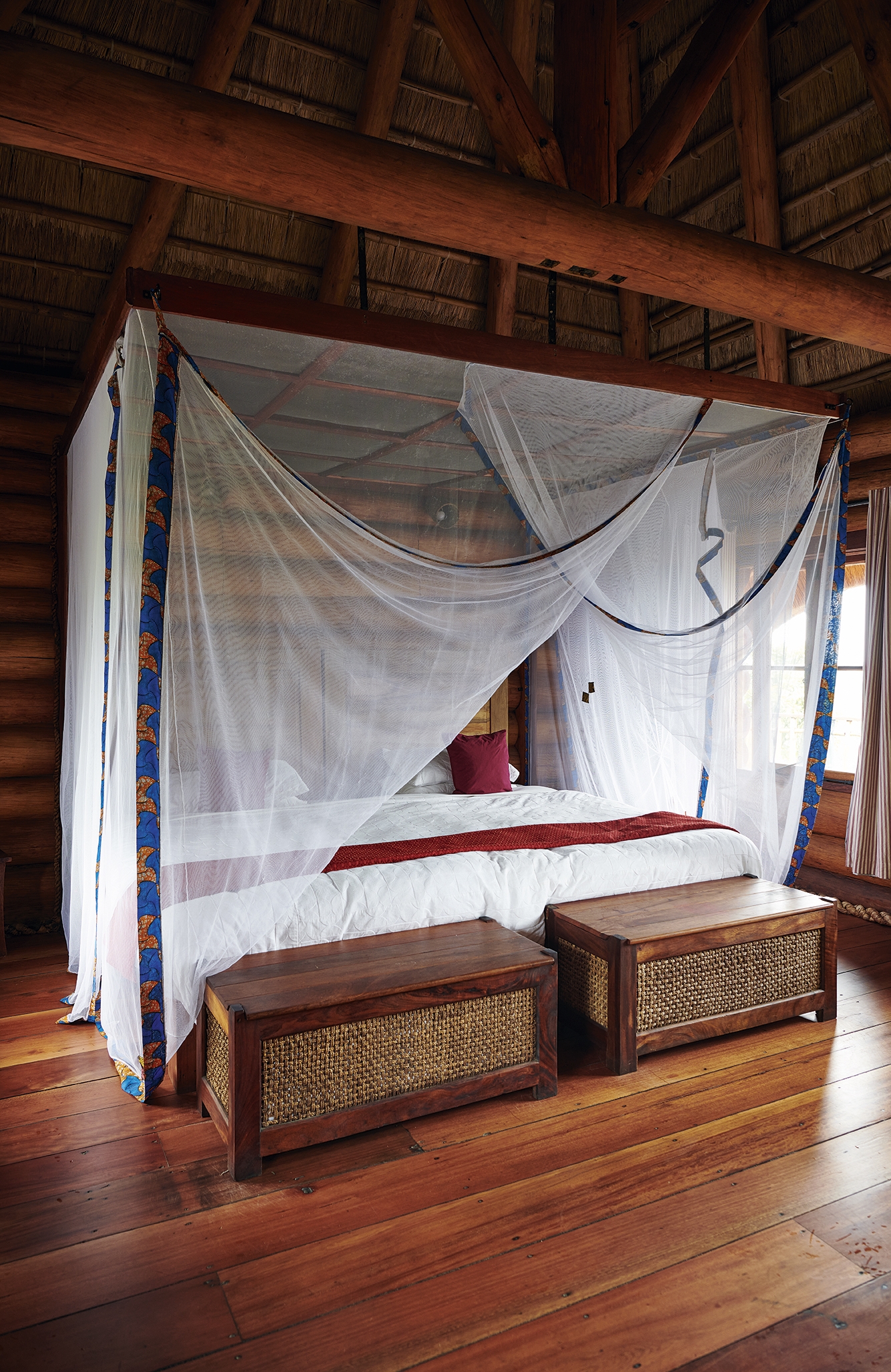
Ride 4 a Woman Run by victims of domestic abuse, this gorilla park guesthouse is alive with industry. Alongside cosy en-suite rooms decorated with handmade furnishings, you’ll find beautiful gardens, traditional experiences, local food and friendly faces. Guests can also have clothes handmade during their stay or even choose to sponsor a local child. Doubles from £117. Kanungu, Buhoma, 00 256 785 999112, ride4awoman.org
Travel Information
Bwindi’s Impenetrable Forest is one of several national parks in Uganda’s diverse landscape. In the country’s south-west, it is home to a high concentration of primates and bird species. The national currency is the Ugandan Shilling and time is three hours ahead of GMT. Flight time is around ten hours from London via Nairobi. It is recommended to travel to Bwindi with a recognised tour operator.
GETTING THERE
Kenya Airways fly to Entebbe Airport from London Heathrow, via Nairobi. Bwindi is a 10hr drive or a 1hr 10min flight with Aerolink Uganda to Kihihi, followed by an hour’s drive. kenya-airways.com, aerolinkuganda.com
RESOURCES
Uganda Tourism Board (UTB) has information on where to go and what to do. utb.go.ug
Bwindi Tours offer gorilla trekking and other wildlife experiences, and will organise travel into the forest. bwindi-tours.com
Bwindi Forest National Park has lots of advice and tips to help you plan your trip. bwindiforestnationalpark.com
Where to eat
Food Glossary
- Groundnut sauce
- A Ugandan favourite, this purplish-brown sauce is made with peanuts
- Irish
- White potatoes
- Kalo
- A soft millet ‘bread’ with the texture of uncooked dough
- Luwombo
- A celebratory stew of meat and vegetables, tied in banana leaves and cooked on a fire, from the Buganda region
- Matoke
- Mashed plantain, a staple food
- Muchomo
- Skewers of meat, typically found at roadside stalls
- Posho
- Staple carbohydrate made with maize flour and water
- Rolex
- Rolled chapati stuffed with an omelette
- Waragi
- Local banana gin
Get Premium access to all the latest content online
Subscribe and view full print editions online... Subscribe

